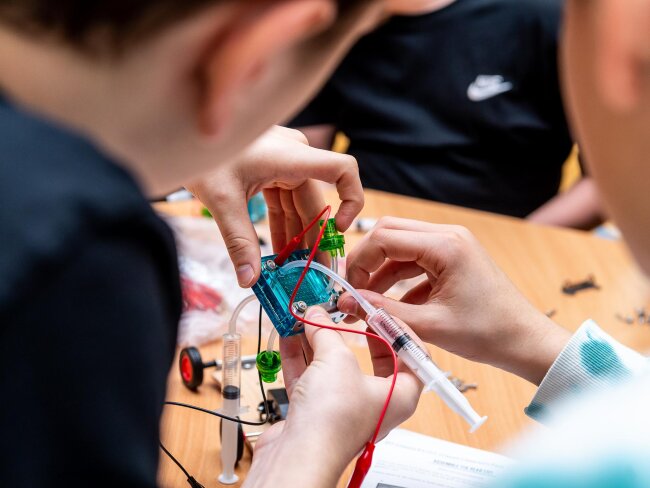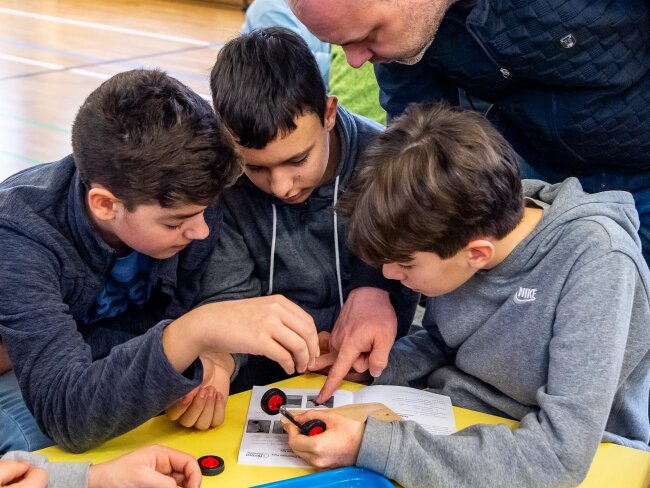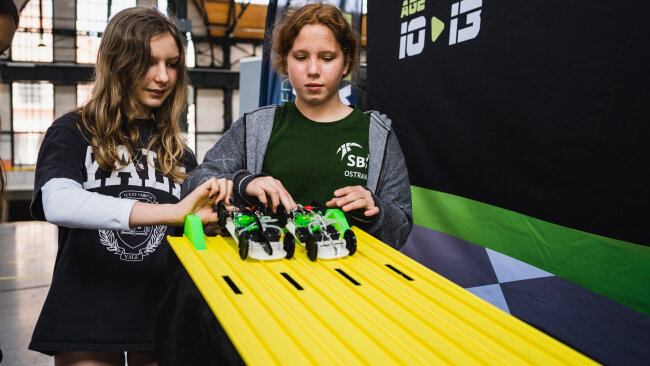The Secret to STEAM
‘STEAM’. We hear about it all the time. We’re told supporting our children in learning or seeking a career in Science, Technology, Engineering Arts and Math (STEAM) is vital to their success. But when it comes to putting these ambitions into practice, things get more complicated. Many children simply don’t enjoy math, science, technology and engineering. How can educators make STEAM more engaging, relevant and rewarding for their students? In this guide, we’ll take you through everything you need to know about the secret to successful STEAM education.


Build Strong Relationships
One of the best ways to get the most out of students is by building empathy and trust. This means tailoring problems, projects, solutions and challenges to the issues students care deeply about. Are most of your students interested in F1 racing or monster trucks? Show them how geometry is central to this. Are they interested in airplanes or spacecraft? Explore the chemical reactions that happen inside these technologies. Rather than expecting students to come to us – our subject or our problem – we must always make learning science and technology relevant for them.
This empathy-driven process makes students co-designers of their own learning, boosting their engagement and interest – and eventually their academic performance.
At the Northeast Academy for Aerospace and Advanced Technologies, for instance, students were given a unique opportunity to enhance their collaboration and project management abilities by coding and controlling drones remotely. The Horizon Hydrogen Grand Prix (H2GP) program challenges students to design, engineer, construct and eventually race their own fuel-cell electric vehicles powered by hydrogen.
Rather than just spoon-feeding information from a blackboard – programs like these empower students to take ownership of their learning. The result is more engagement and commitment from students – and better results in key subjects.
Beware of Cultural Messages
When teaching students STEAM subjects, it’s important to be aware of the cultural messages we convey to our students. This is all the more important for girls – who are underrepresented in STEM fields. But what are these messages that can hinder girls’ participation in STEAM? According to Deborah Singer, Chief Marketing Officer of Girls Who Code, the answer is relatively simple: avoid failure. ‘It’s not that girls aren’t as good at something, they’re just taught if they’re not good at something, then it’s not worth pursuing’, says Singer. ‘We socialize boys to be okay with failure and keep going and we socialize girls to avoid failure’. This might be one reason why society may see boys as more capable and better in STEM.
Empowering girls to learn from failure starts at an early age. ‘I can see my daughter getting steered to play with dolls and princesses instead of building blocks’, says Singer. ‘The thing is, these engineering activities are all about building and rebuilding through trial and error. Girls need to be exposed to tinkering, playing and exploring.’
It also may be difficult for girls to imagine a career in STEM without role models. If young girls don’t see older women in STEM roles – they can count themselves out even after being exposed to STEM subjects in school. According to the US Bureau of Labor Statistics, while women make up 56.8 percent of the workforce, only 35% are employed in STEM fields. Introducing girls to the long history of women in computing is a way of combating this. Learning about Katherine Johnson (the pioneer of early computer science whose calculations were critical to the success of the first US crewed space missions) or Margaret Hamilton (who developed on-board flight software for NASA's Apollo program) can give girls a role model on which to base their aspirations.


Get Student Feedback
Teachers often read lots of advice about how to integrate STEAM education into their curriculum – but what’s lacking is feedback from students. By understanding how these activities are received by students, teachers can better adapt lessons to cater to student interests and needs. This means anonymous surveys and polls, oral feedback and comments from parents. With this, teachers can understand what’s working and what isn’t.
Meaningfully Integrate the Arts
‘STEAM’ has become something of a buzzword nowadays. While teachers all around the world might talk about STEAM – meaningfully integrating the arts (turning ‘STEM’ into ‘STEAM’) can be a challenge.
Current research – however – points to the importance of doing this. Blending STEM subjects with things like history, music, visual arts and theatre has been shown to have a lasting impact on students’ academic achievement.
How can teachers achieve this? One of the key ingredients of STEAM education is the ability to explore. Whether it’s giving students space to think about how music can influence coding or the visual arts can impact engineering decisions – exploration is at the heart of STEAM.
Most practitioners of STEAM argue that it's beneficial to bring Arts and creativity to STEM subjects. There are, however, a growing group of teachers who are doing the opposite. Angela Lou of the STEAM department at Boston Arts Academy in Massachusetts is exploring how educators can apply scientific thinking to the arts: ‘I wonder what might happen if STEM skills cross-pollinated the arts world. What kinds of design connections could students make if we asked them to think like engineers when creating an arts piece? Or could students use their arts to take a stance on public issues, such as urban planning, genetic engineering, and space exploration? With STEAM thinking, the possibilities are endless!’
Conclusion
So, what’s the secret to STEAM? Teachers can apply a range of techniques to get students interested in STEAM subjects. This starts with building trust and strong relationships with your class. Give students space to design their own learning. Make the subject relevant and interesting for them, and empower them to make their own decisions about what forms of assessment and learning they prefer.
There are also other key things that make STEAM education more rewarding for your students. Consider the cultural messages you give to students (especially girls), making sure they are exposed to appropriate role models. Get student feedback to make sure you’re on track. Finally, find meaningful ways to integrate the arts with STEM, thinking not only about how the arts can be blended with technology but how science and technology can enhance the learning about the arts.